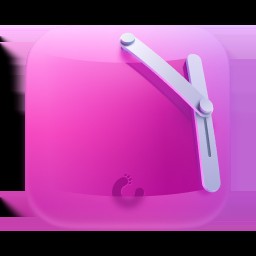Is your iPhone constantly alerting you about running out of storage space? For iPhone users and photography enthusiasts, managing storage is a perennial concern. Apple addressed this issue by introducing a new image file format called HEIC, designed to save precious space without sacrificing image quality.
Since iOS 11, HEIC (High Efficiency Image File Format) has become the standard for photos on iPhones and iPads. While HEIC offers significant advantages, it can sometimes present compatibility challenges when sharing or transferring photos to devices and platforms that don’t fully support it.
This guide will delve into everything you need to know about HEIC files. We’ll explore what HEIC is, its benefits over traditional JPGs, potential compatibility issues, and, most importantly, how to manage HEIC files effectively, including converting HEIC to JPG or PNG when needed.
Understanding HEIC Files: The High Efficiency Image Format
HEIC stands for High Efficiency Image Container. It’s a modern image file format that Apple adopted to replace the older, less efficient JPG format as the default on iPhones and iPads. Introduced with iOS 11 and on iPhone 7 and later models, HEIC’s primary goal is to store high-quality images while using significantly less storage space.
Essentially, HEIC uses advanced compression technology to pack more visual information into a smaller file size. In most everyday use cases on your iPhone, you won’t even notice you’re dealing with HEIC files. However, when you start transferring photos to other devices or platforms, you might encounter situations where HEIC compatibility becomes relevant.
The key advantage of HEIC is its efficiency. It can store images at roughly half the file size of JPG while maintaining comparable, or even superior, image quality. This means you can store twice as many photos on your iPhone without compromising on visual fidelity.
HEIC vs. JPG: Why HEIC is a Step Forward
When comparing HEIC to JPG, the long-standing champion of image formats, HEIC clearly demonstrates several advantages:
- Superior Compression: HEIC files are significantly smaller than JPGs for the same image quality. This translates directly to more storage space on your devices, especially beneficial for users who take a lot of photos and videos.
- Enhanced Image Quality: HEIC supports 16-bit color depth compared to JPG’s 8-bit. This allows HEIC to capture and display a wider range of colors and tones, resulting in richer, more vibrant, and nuanced images, especially noticeable in scenes with subtle color gradations.
- Modern Format Features: HEIC is a more modern and versatile format. It can store image sequences (like Live Photos), depth information, and transparency, features that are either limited or not supported by JPG.
However, despite these benefits, JPG remains the more universally compatible format. JPG has been around for decades and is supported by virtually every operating system, browser, image editor, and online platform. This widespread compatibility is JPG’s main strength, while HEIC’s primary drawback is its relatively newer status and therefore, limited native support across all systems.
The Catch: HEIC Compatibility Issues
The main challenge with HEIC arises from its compatibility. While Apple’s ecosystem fully embraces HEIC, support outside of Apple devices and software is still catching up.
- Operating System Support: Older operating systems like Windows versions before Windows 10, older Android versions, and some Linux distributions may not natively support HEIC.
- Software Compatibility: Some older image editing software, social media platforms, and online services may not directly support uploading or displaying HEIC files.
- Browser Support: While modern browsers are increasingly supporting HEIC, older browsers might require plugins or may not support it at all.
This lack of universal compatibility can lead to inconveniences when you need to share your iPhone photos with others who are not using Apple devices, or when you need to use your HEIC images in software that doesn’t recognize the format.
Managing HEIC Files: Solutions and Workarounds
Fortunately, managing HEIC files and overcoming compatibility hurdles is quite straightforward. There are several effective strategies to handle HEIC files depending on your needs and the situation.
Option 1: Automatic Conversion During Transfer to Mac or PC
Apple has made it easy to automatically convert HEIC to JPG when transferring photos from your iPhone to a Mac or Windows PC. This is often the simplest solution for most users.
Here’s how to set up automatic conversion:
- On your iPhone, open Settings.
- Tap Photos.
- Scroll down to the “Transfer to Mac or PC” section.
- Select Automatic.
With this setting enabled, whenever you transfer photos from your iPhone to your computer, they will be automatically converted to JPG format during the transfer process, ensuring compatibility without any extra steps.
Option 2: Change Camera Settings to Capture JPGs Instead of HEIC
If you prefer to avoid HEIC files altogether and want your iPhone to capture photos directly in JPG format, you can change your camera settings. Keep in mind that this will mean larger file sizes and potentially slightly lower image quality compared to HEIC.
To switch to shooting in JPG format:
- Open Settings on your iPhone.
- Tap Camera.
- Tap Formats.
- Choose Most Compatible. This will set your iPhone to capture photos in JPG format. Choosing “High Efficiency” keeps the HEIC format.
Option 3: Converting HEIC Files to JPG or PNG Manually
In situations where you already have HEIC files and need to convert them to JPG or PNG for compatibility, there are several easy methods for manual conversion.
Converting HEIC to JPG on Mac using Preview:
macOS Preview offers a built-in way to convert HEIC files:
- Open your HEIC image in Preview.
- Click File in the menu bar, and select Export.
- In the Export dialog, under the Format dropdown menu, choose JPEG (or PNG, if you prefer).
- Click Save.
Converting HEIC to JPG on Windows using Online Converters:
For Windows users, or for batch converting HEIC files, online HEIC to JPG converters are a convenient option. A popular and reliable online tool is HEICtoJPG.
- Go to HEICtoJPG in your web browser.
- Click inside the designated area to select and upload your HEIC files. You can usually upload multiple files for batch conversion.
- Click the Convert button.
- Once converted, you can download the JPG files to your computer.
HEIC Compatibility with Professional Photo Software: Photoshop and Lightroom
For photographers who use professional editing software, HEIC support in Adobe Photoshop and Lightroom is crucial. Fortunately, both Photoshop and Lightroom have been updated to handle HEIC files seamlessly, provided you are using recent versions and your operating system is up to date.
- Adobe Photoshop and Lightroom: If you are running macOS High Sierra (10.13) or later, or Windows 10 or later, and using recent versions of Photoshop and Lightroom (Lightroom CC 1.4, Lightroom Classic CC 7.4, or later), you should be able to open and edit HEIC files without any issues. For older versions, you might need to update your software or install HEIC codec support for your operating system.
The Future of HEIC: Efficiency and Wider Adoption
HEIC represents a significant advancement in image file technology. Its superior compression and image quality benefits are undeniable, especially in a world where high-resolution photos and videos are increasingly common, and storage space is always at a premium.
As technology continues to evolve, HEIC is expected to gain wider adoption across different platforms and software. The trend is towards more efficient and modern file formats, and HEIC is at the forefront of this movement. While JPG will likely remain relevant for its universal compatibility for some time, HEIC’s advantages position it as a strong contender to become the dominant image format in the future.
In Conclusion:
HEIC is a powerful and efficient image format that offers significant benefits for iPhone users, primarily in terms of storage savings and image quality. While compatibility challenges exist, they are easily manageable through automatic conversion, setting adjustments, and readily available conversion tools. Understanding HEIC and how to handle it ensures you can take full advantage of your iPhone’s camera capabilities without being hindered by file format limitations. As HEIC adoption grows, it promises a future of more efficient and higher-quality digital imaging for everyone.
 CleanMy®Phone
CleanMy®Phone
